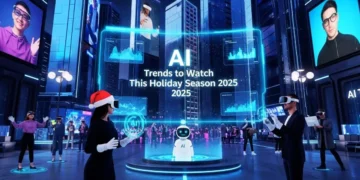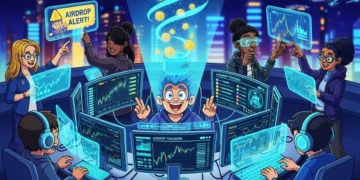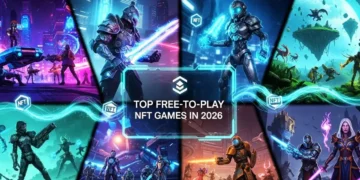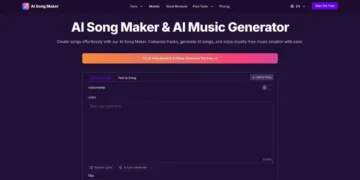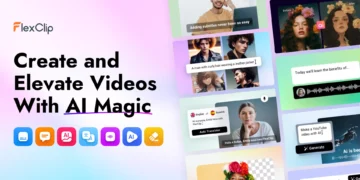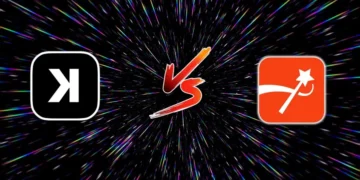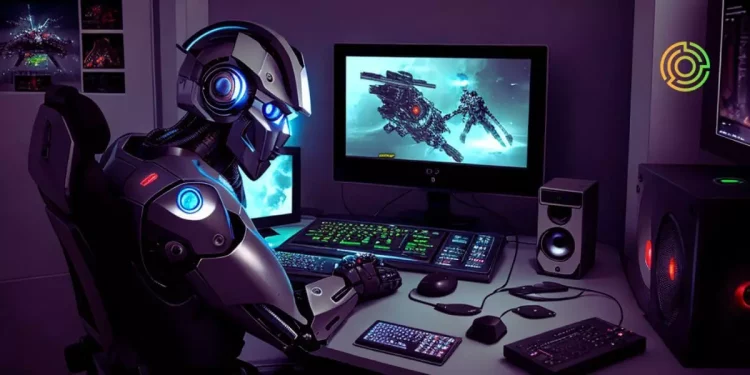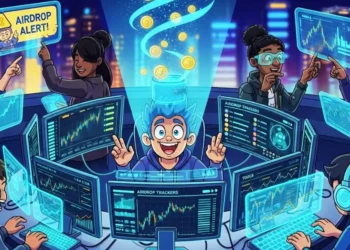Artificial intelligence (AI) is transforming the video game development industry, taking 3D animation to new horizons of realism and interactivity. From machine learning to computer vision, AI tools are redefining the way characters move, interact and respond within virtual environments.
Let’s take a look at what specific tools and technologies developers are using to raise the standard for 3D animation in video games.
Machine Learning
In the field of video game development, machine learning has become a mainstay for creating more realistic and interactive 3D animations. Two of the most prominent tools in this field are TensorFlow and PyTorch.
TensorFlow, developed by Google, is widely used to train machine learning models that can generate animations with a high degree of realism. These models can learn from the most subtle movements, such as a character’s facial expression, to more complex actions, such as interacting with objects in a virtual environment. The advantage of TensorFlow lies in its flexibility and scalability, allowing developers to experiment with different algorithms and techniques.
On the other hand, PyTorch is also used in 3D animation and is especially known for its effectiveness in deep learning algorithms. Like TensorFlow, PyTorch offers a robust environment for training models that can be implemented to improve the quality of animations in video games. Its main attraction is ease of use and the ability to make real-time adjustments during the training process.
Both tools offer game developers a wide range of possibilities to improve the quality and realism of 3D animations, from the design phase to the final implementation.
Natural Language Processing (NLP)
Natural Language Processing (NLP) is playing an increasingly crucial role in the evolution of 3D animation in video games. The incorporation of NLP not only improves the interaction between the player and non-player characters (NPCs), but also enriches the narrative and immersion of the game.
Dialogflow, a tool developed by Google, is widely used in the industry to create more natural and realistic dialogue between characters. By using machine learning algorithms, Dialogflow allows NPCs to understand and respond to user queries in a more human-like manner. This results in more fluid and realistic conversations, which in turn improves animation quality by making characters behave more consistently with the dialogue.
On the other hand, language models such as OpenAI’s GPT-4 and GPT-3.5 are revolutionizing the way textual content is generated in video games. These models can create complex dialogues and narratives that are almost indistinguishable from human-written text. The application of these models in 3D animation allows characters to not only move realistically, but also interact with the environment and players in a way that feels genuine.
Computer Vision
Computer vision is another artificial intelligence discipline that is having a significant impact on 3D video game animation. This technology focuses on teaching machines to interpret and understand the visual world. In the context of video games, computer vision is used for a variety of applications ranging from motion tracking to object detection and scene interpretation.
One of the most popular libraries in this field is OpenCV (Open Source Computer Vision). This library offers a wide range of tools that allow developers to implement functions such as real-time motion tracking. For example, in sports or action games, OpenCV can be used to analyze the posture and movements of characters in the game, allowing for more realistic and adaptive animations.
On the other hand, computer vision is also used in environment simulation. Advanced algorithms can analyze and understand the geometry and lighting of a scene, allowing developers to create more realistic environments. This is especially useful in open-world games, where the consistency and realism of the environment is crucial to player immersion.
Another emerging application is the interaction between characters and objects within the game. Through the use of computer vision, characters can “see” and “understand” their environment, allowing for more complex and realistic interactions. For example, a character might be able to identify objects in a room and use them in a logical manner, such as picking up a key to open a door.
Simulation and Rendering
Simulation and rendering are essential components in creating realistic 3D environments and characters in video games. Artificial intelligence is playing an increasingly significant role in these aspects, enabling developers to achieve unprecedented levels of detail and realism.
NVIDIA PhysX is one of the most popular physics engines that employ AI algorithms to simulate realistic physical environments. This engine not only handles aspects such as gravity, collision and friction, but also uses machine learning to predict and simulate complex behaviors. This can include everything from how an object breaks or deforms to how different elements in an environment interact, such as water and fire. The result is smoother, more realistic animation that enhances the player experience.
In the rendering arena, AI-based ray tracing or “AI-based Ray Tracing” is gaining ground. Traditionally, ray tracing is a time-consuming and resource-intensive process, but AI algorithms make it possible to speed up this process by predicting which areas of a scene need more detail. This not only improves rendering efficiency, but also results in more detailed and realistic images.
Other emerging technologies in this field include tissue and hair simulation, where AI is used to create more natural movements in response to factors such as wind and gravity. There are also advances in lighting and shadow simulation, where AI can predict how light will interact with different surfaces to create more realistic effects.
Game-Specific Tools
Unity ML-Agents
- Description: Unity ML-Agents is a Unity extension that allows developers to train intelligent agents within the Unity environment.
- 3D Animation Applications: It is used to train character and object behaviors, allowing for more realistic and adaptive animations. For example, a character could learn to walk or run more naturally in different terrains.
- Languages and Frameworks: Python for training, C# for Unity implementation.
Unreal Engine’s AI Tools
- Description: Unreal Engine offers a set of AI tools that are integrated directly into the engine.
- Applications in 3D Animation: These tools allow the creation of non-player characters (NPCs) with complex and realistic behaviors. This includes navigation, decision making and interactions with the environment.
- Languages and Frameworks: C++ and Blueprints (a visual scripting system).
Amazon Lumberyard
- Description: It is a free game engine that includes a variety of AI tools.
- Applications in 3D Animation: Used to create more realistic character behaviors and animations by using machine learning algorithms.
- Languages and Frameworks: C++ and its own scripting language, Lua.
Godot Engine
- Description: Godot is an open source game engine that also offers AI support.
- 3D Animation Applications: Although not as robust as Unity or Unreal in terms of AI, Godot offers basic functionality for implementing character behaviors and animations.
- Languages and Frameworks: GDScript, a scripting language similar to Python, and C#.
These tools offer a wide range of functionalities that allow developers to incorporate AI elements into their games, improving both the quality of animations and overall user interaction.
APIs and SDKs
APIs (Application Programming Interfaces) and SDKs (Software Development Kits) are essential components in modern video game development, especially when it comes to implementing artificial intelligence for 3D animation. These tools enable greater flexibility and efficiency, while offering advanced capabilities to enhance the player experience.
Azure PlayFab
- Description: Azure PlayFab is a back-end platform as a service that offers a variety of gaming services, including AI-based personalization.
- 3D Animation Applications: Using machine learning algorithms, PlayFab can adapt the game experience in real-time, including adjusting character behavior and animations based on the user’s play style.
- Languages and Frameworks: Compatible with multiple programming languages such as C#, Java and Python.
IBM Watson
- Description: IBM Watson is known for its advanced capabilities in natural language processing and machine learning.
- Applications in 3D Animation: Watson can be used to create in-game chatbots and virtual assistants, which adds an additional layer of interaction and realism. In addition, its algorithms can be applied to improve NPC decision making.
- Languages and Frameworks: Compatible with several languages, including Python, Java and Node.js.
Google Cloud Gaming Services
- Description: Offers a suite of cloud solutions designed specifically for game development.
- 3D Animation Applications: Its AI services can be used for player behavior analysis, which in turn can inform and adapt animations and in-game interactions.
- Languages and Frameworks: Primarily Python and C++.
NVIDIA Deep Learning AI
- Description: Offers a series of APIs and SDKs designed to accelerate the process of implementing deep learning algorithms.
- 3D Animation Applications: Used for real-time rendering and simulation of physical environments, resulting in more realistic animations.
- Languages and Frameworks: C++ and Python are the most common.
Together, these APIs and SDKs offer a robust set of tools that allow game developers to implement advanced AI features in their projects, thus enriching the quality and realism of 3D animation.
What software they use to create games
Each company uses some or other tools, but all of them with the same goals, to achieve realism and ensure that the next game is really spectacular.
Among them we have:
Autodesk Maya with Arnold
- Description: Autodesk Maya is one of the main 3D modeling and animation platforms, and Arnold is its rendering engine. Both offer support for AI.
- AI applications: Used for AI-driven rendering and physics simulations.
Adobe Sensei
- Description: Adobe Sensei is Adobe’s artificial intelligence and machine learning platform.
- AI applications: Used for data analysis, task automation, and graphics and animation enhancement.
Houdini by SideFX
- Description: Houdini is known for its data-driven visual effects capabilities.
- AI applications: Used for complex simulations that can be enhanced with machine learning algorithms.
Conclusion
Artificial intelligence is truly transforming the world of video game development and 3D animation. From powerful machine learning frameworks like TensorFlow and PyTorch to natural language processing tools like Dialogflow, AI enables game creators to achieve unprecedented levels of realism, interactivity and immersion. Technologies like computer vision and physics simulation engines equipped with AI algorithms also allow for incredibly detailed and responsive environments and characters.
Major gaming companies are actively integrating solutions like Unity’s ML-Agents and Unreal Engine’s built-in AI tools to train intelligent behaviors. And APIs from providers like Google Cloud, IBM Watson and NVIDIA give developers enhanced capabilities in areas like analysis, rendering and simulation. Powerful 3D animation software platforms like Autodesk Maya, Adobe Sensei and Houdini further complement these AI functionalities.
As AI research continues to rapidly advance, the future of video game development looks incredibly promising. We can expect to see even more lifelike NPC interactions, adaptive gameplay and complex narrative development in the years to come. While human creativity remains at the core, AI is the game-changing force that will elevate video games to unprecedented interactive and cinematic heights.
FAQs
How is AI improving 3D animation for games?
AI is enabling more realistic physics simulations, character movements, facial expressions, natural environment interactions and other details that enhance realism.
What machine learning tools are used for game animation?
Popular ML tools like TensorFlow, PyTorch, Unity ML-Agents and Unreal’s built-in AI help train models for animating behaviors and reactions.
How does NLP improve animation and interaction?
NLP tools like Dialogflow create more natural conversations between characters, aligning animations with realistic dialogue.
What is computer vision’s role in game development?
It analyzes environments and character movements to enable features like motion tracking, object interaction and scene understanding for realistic animations.
How are APIs and SDKs accelerating AI adoption?
They provide easy integration of advanced AI capabilities like simulation, rendering, analytics and graphics enhancement into the game development process.
What software do game creators use for animation?
Key animation and modeling tools like Autodesk Maya, Houdini, and Adobe Sensei incorporate AI to boost realism, physics and graphics.
What is the future outlook for AI in games?
Experts predict AI will enable even more immersive, cinematic experiences with cutting-edge graphics, interactive worlds and engaging narratives.
Follow us on our social networks and keep up to date with everything that happens in the Metaverse!
Twitter Linkedin Facebook Telegram Instagram Google News Amazon Store



